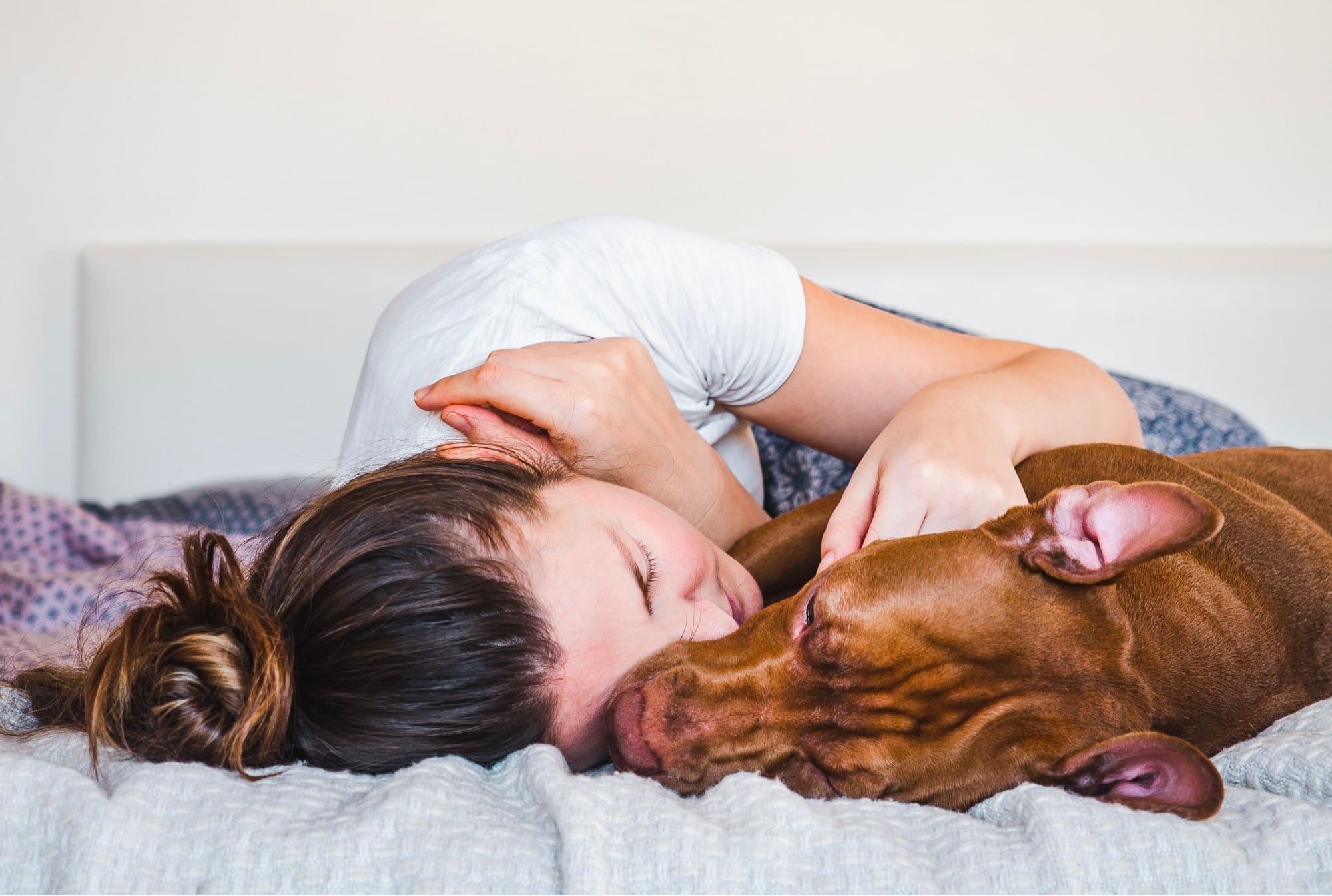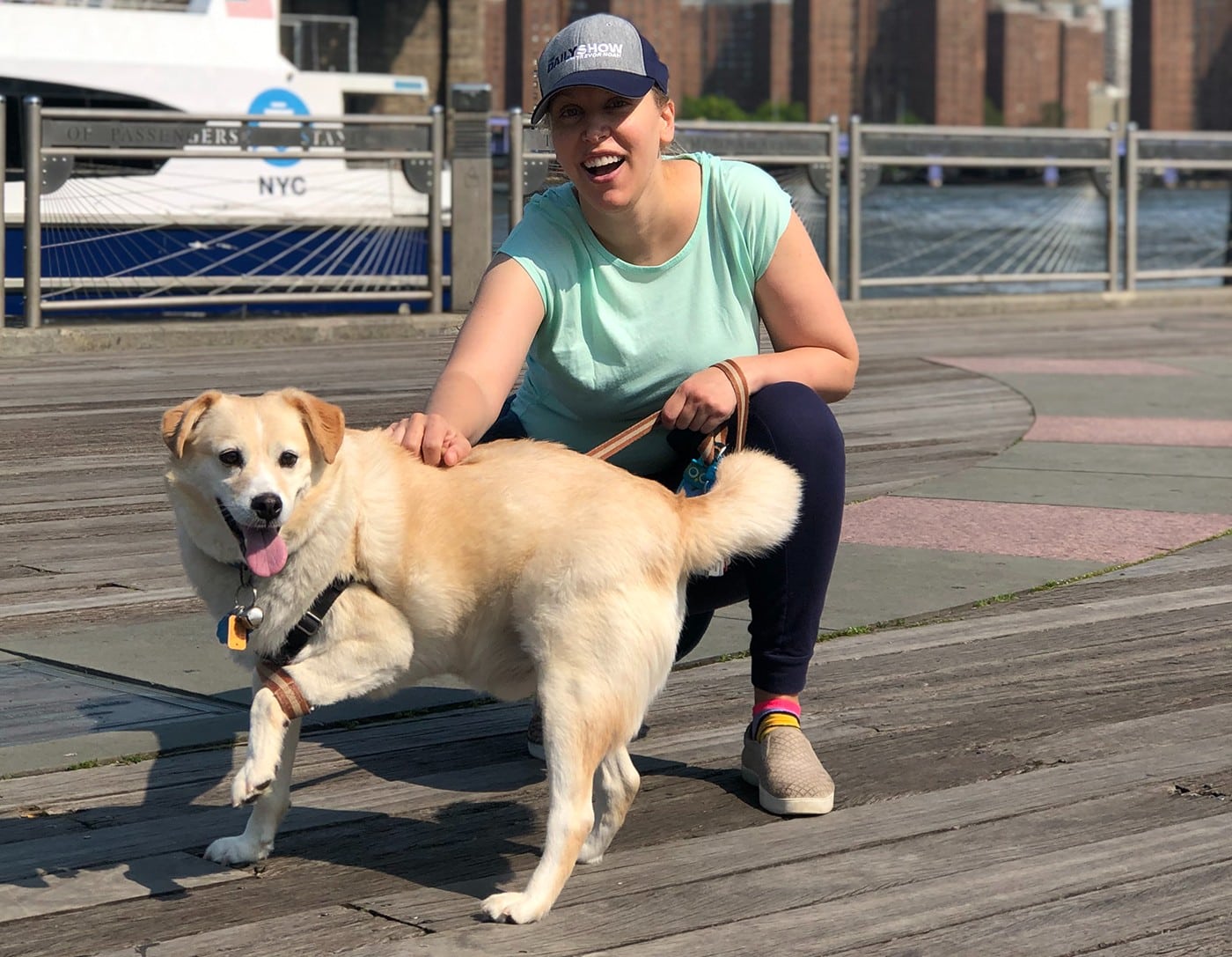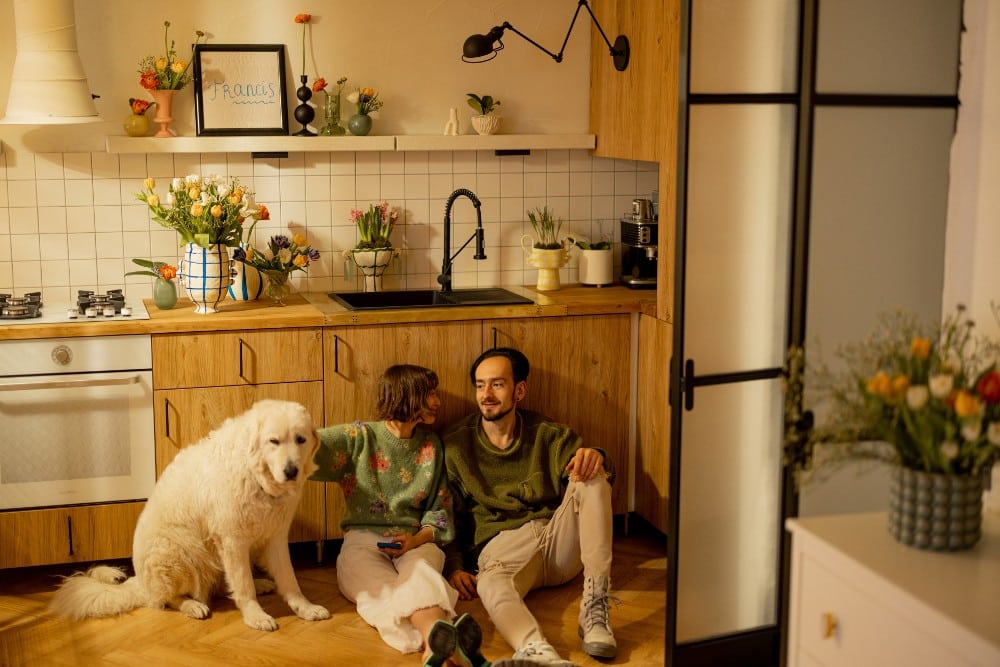Whether you got your dog as a puppy or adopted a senior, it’s always excruciating when the day comes when you need to say goodbye to your loyal companion. But as hard as it may be, it is often the best decision. If your dog’s quality of life has been severely impacted by illness, injury, or age-related ailments, taking away their pain is the most unselfish thing you can do.
“Your pet will always be in your heart. No one can take them away from you,” says Dr. Kristi Freeman, a veterinarian and owner of Graceful Departures, a San Diego-based mobile euthanasia and hospice practice.
That doesn’t make it any easier, though.
Related: Why Saying Goodbye to a Dog Is So Unbelievably Hard
To find peace during this difficult time, there are things you can do to prepare you for your dog’s euthansia.
Let Go of Your Guilt
In addition to grief, many dog parents feel immense guilt about their choice to euthanize their dog. But it’s crucial to understand that you made the best decision you could for your dog with the information you had at the time, and knowing you did everything you could. You are freeing your dog of pain and suffering while also giving him his dignity.
Related: This Pilot is Saving Dogs’ Lives One Flight at a Time
“We cannot always control an accident or life-threatening illness,” says Dr. Jacqueline Burnett-Brown, Ph.D. a psychotherapist at Senior Tail Waggers. “It is important to remember everything we have done to care for our pets. It is also important to give ourselves credit for the care provided when we found out they were sick or injured.”
Dr. Kristi Freeman recommends writing your dog a letter or talking about your feelings with them or a trusted friend.
“If you know that you did your best, sometimes it helps to feel the feelings, acknowledge them, then let them go. Most of the time, in my experience, there is no need for the pet owner to feel guilty,” she said.
Give Your Dog the Best Day Ever
Treating your dog to a wonderful day can be therapeutic for you both. Whether you take him to his favorite park, have a celebration life party, or feed him his favorite treats, showering your pup with love and affection will create lasting memories that you’ll cherish.
“I tell people it’s okay to spoil their dogs rotten. Go for a walk, go to their favorite park, go for a car ride, buy them a cheeseburger, brush them, pet them, tell them how much you love them,” says Dr. Freeman. “Remember, though, that your pet doesn’t have expectations like you do, so if they’re too sick to make that final trip to the beach, it’s okay.”
Preparing Yourself and Your Dog for Euthanasia
Uncertainty can make your grief even worse, so understanding how the euthanasia process works can alleviate some of your anxiety. Ask your vet detailed questions about the procedure so you know how to best prepare yourself, as well as your dog.
Some of the questions Dr. Freeman recommends asking, include:
- How much does the procedure cost and can you pay for it beforehand?
- Any restrictions on food, water, or medicines beforehand?
- What kind of procedure is it and what is the process like?
- Can it be done at home?
- How long does it take?
- Will the veterinarian communicate what is happening and what to expect?
- Is there sedation given before the euthanasia? What should we expect?
- Do they take your dog to the back to put in a catheter (and are you okay with that)?
- Can you stay with your dog the whole time?
- Do they use any techniques to reduce the dog’s pain, fear, anxiety, and stress?
- How long can you stay with your dog afterward?
- Do they put a blanket over the stainless-steel table or on the floor for the dog to lie on?
- Can you bring family members and other dogs to say goodbye?
- What aftercare options, like cremations, are available and how much do they cost?
Many veterinarians do not get training in bedside manner or end-of-life sensitivity, so Dr. Freeman recommends finding a vet who has some flexibility in their process. Make sure they have a good bedside manner, including being good listeners and communicators.
Related: This Pilot is Saving Dogs’ Lives One Flight at a Time
You should also think about if you want to have the procedure done at home or in a clinic. This is an extremely personal choice with no right or wrong decision.
“There are times when it happens in a hospital setting but I’d rather be at home with my loved ones when it’s my time to go,” Dr. Freeman says, adding, “Some clients may not want the memory of saying goodbye at home or sometimes there’s an emergency and the best thing for the pet is to be euthanized as soon as possible in a pet ER or hospital.”
Making Your Dog Comfortable Beforehand
To make the procedure as stress-free as possible for your dog, it’s essential to keep him calm and comfortable.
“If you can find a Fear Free practitioner or practice that would be great. Some veterinarians may prescribe a mild tranquilizer for the pet. Some pets pick up on the emotions of their pet parents so staying as calm as possible yourself may be helpful to your pet,” said Dr. Freeman.
If the clinic doesn’t take your dog back right away, keep him calm by minimizing your time waiting.
“I advise owners to always make an appointment for the procedure to minimize waiting at the clinic or hospital. Sedatives should be given to calm the dog and make the process smooth,” Dr. Jamie Whittenburg, a veterinarian at Senior Tail Waggers and Director of Kingsgate Animal Hospital, says.
Understanding What the Euthanasia Procedure Entails
Knowing what to expect during the procedure can help make it easier.
Your vet should do everything she can to minimize anxiety, stress, pain, and fear, such as being in a quiet area, playing music, using pheromones…whatever it takes, says Dr. Freeman.
And the vet should take her time during the process. “I let the pet come to me and won’t make eye contact as that can be threatening. I also position myself so as to not be threatening, says Dr. Freeman.
One your dog is relaxed, or as relaxed as can be, the veterinarian will give a sedative injection that takes away any pain and discomfort, and causes your dog to fall asleep. An IV catheter is also placed, which when ready, is where the euthanasia solution is inserted into the vein.
“This medication renders the dog unconscious by inducing general anesthesia. It then will act to stop the dog’s heart. The procedure is entirely pain-free for the dog,” says Dr. Whittenburg.
While side effects are rare, make sure your veterinarian talks to you about them.
“There are occasional reflexes like stretching, urinating, defecating, or deep breaths as the dog passes away,” says Dr. Freeman. “The pet will not be aware of any reflexes its body might do.”
Caring for Your Dog’s Remains
It’s important to remember that your dog still belongs to you, even after he’s been put to sleep. As such, you should consider all of your aftercare options.
Most clinics offer three or four burial options, including:
- Burial at home
- Private cremation: only your dog is in the large chamber
- Individual cremation: other dogs are in the chamber but completely separated so you’re getting only your dog’s ashes back
- Communal cremation: dogs are put in the chamber together and their remains are scattered for you on land or in the ocean by the company.
There are several ways to memorialize your dog after putting him down.
“Some ways to honor or memorialize them include a clay paw print, an ink/paint nose or paw print, a shadow box with your dog’s possessions, making a photo album or movie, writing them a letter, eulogizing them on social media, having a funeral, or turning their ashes into a memory glass orb or pendant,” says Dr. Freeman.
Related: This Company Turns Your Dog’s Ashes Into Diamonds
Coping Skills for Grieving Dog Parents
Losing your dog is a crippling experience. It’s important to give yourself plenty of time and space to grieve, along with having a support system.
“Join a support group for pet lovers who have lost the pet they loved. You may be able to find a pet support group locally with Google or online in Facebook Groups,” says Dr. Burnett-Brown. “Support groups or even friends or neighbors who have experienced a loss of a pet can be of great help.”
Putting your dog to sleep will never be an easy decision. However, it’s important to know that you’ve gone above and beyond to give your dog the best life possible and that he will always be with you in your heart.
Related: TV Anchor Says Goodbye to Dog With Bucket List and Heartbreaking Tribute


















